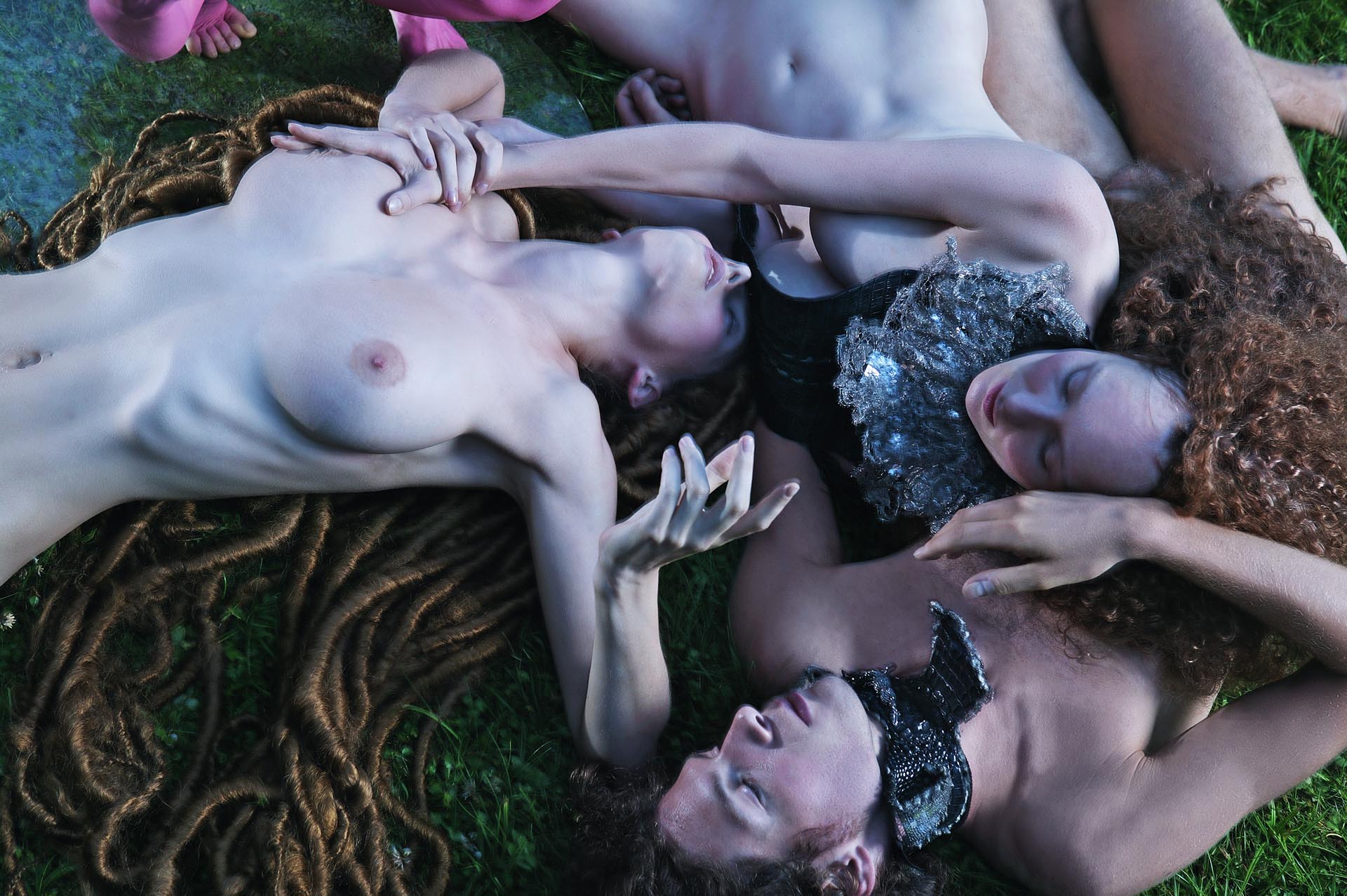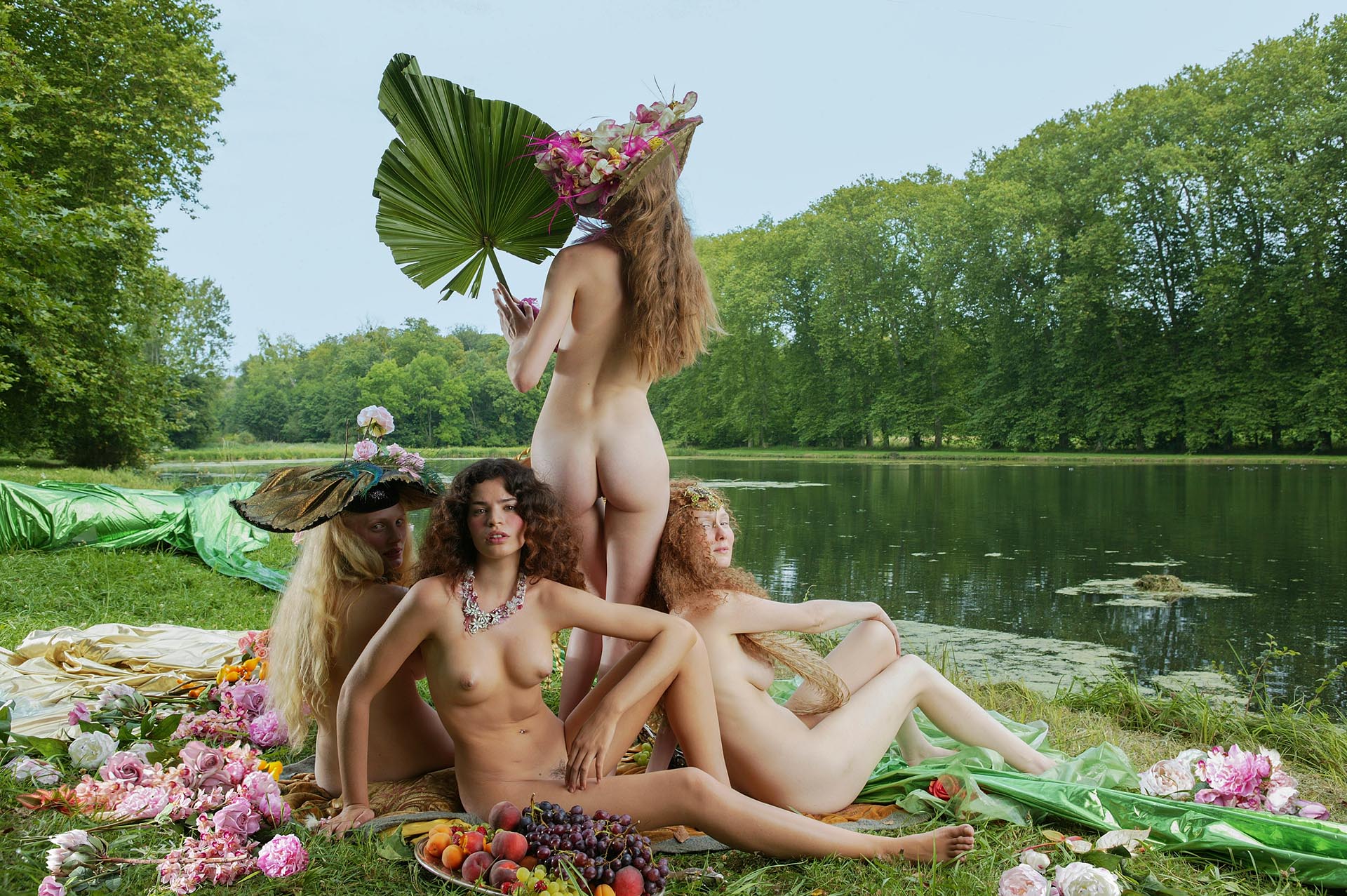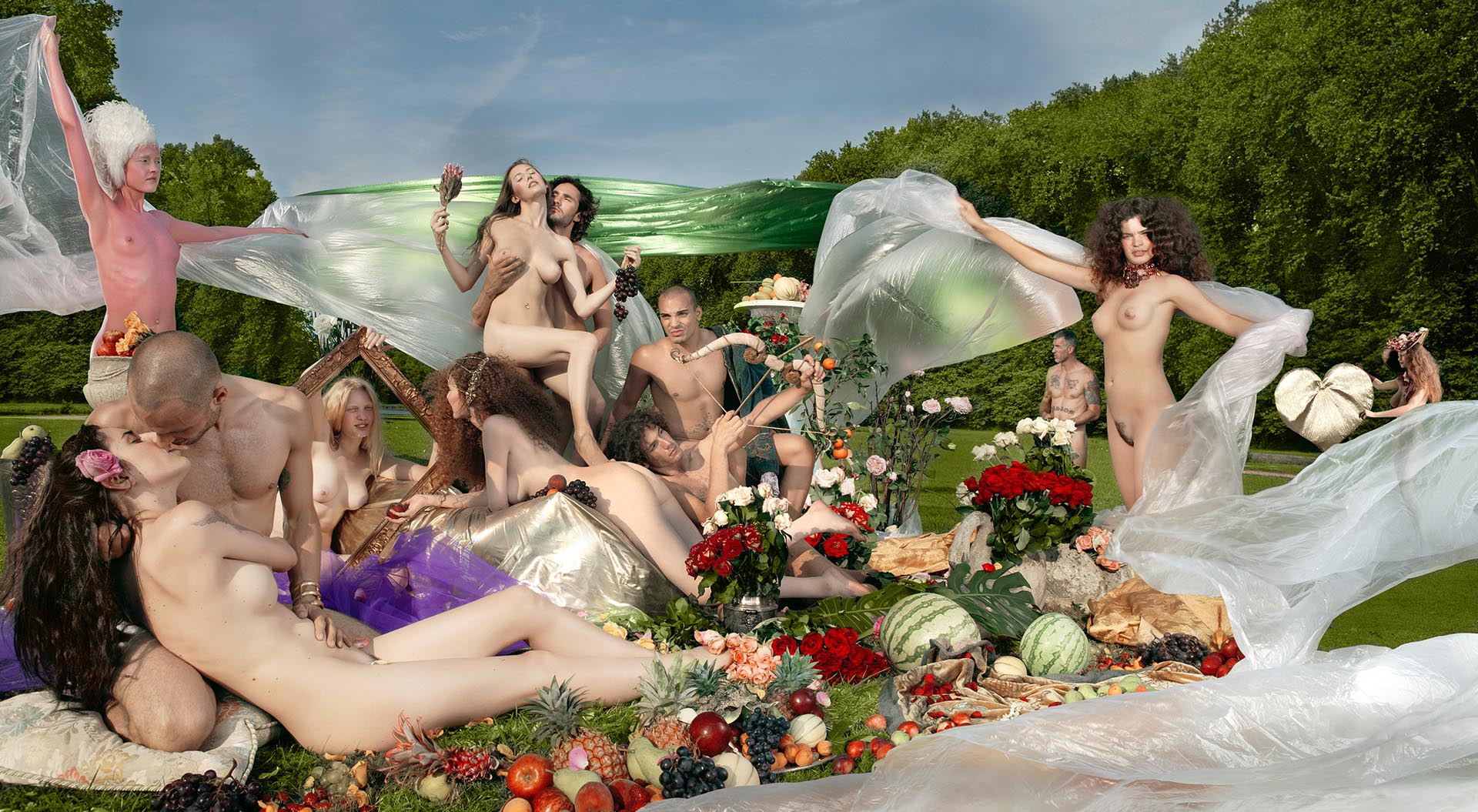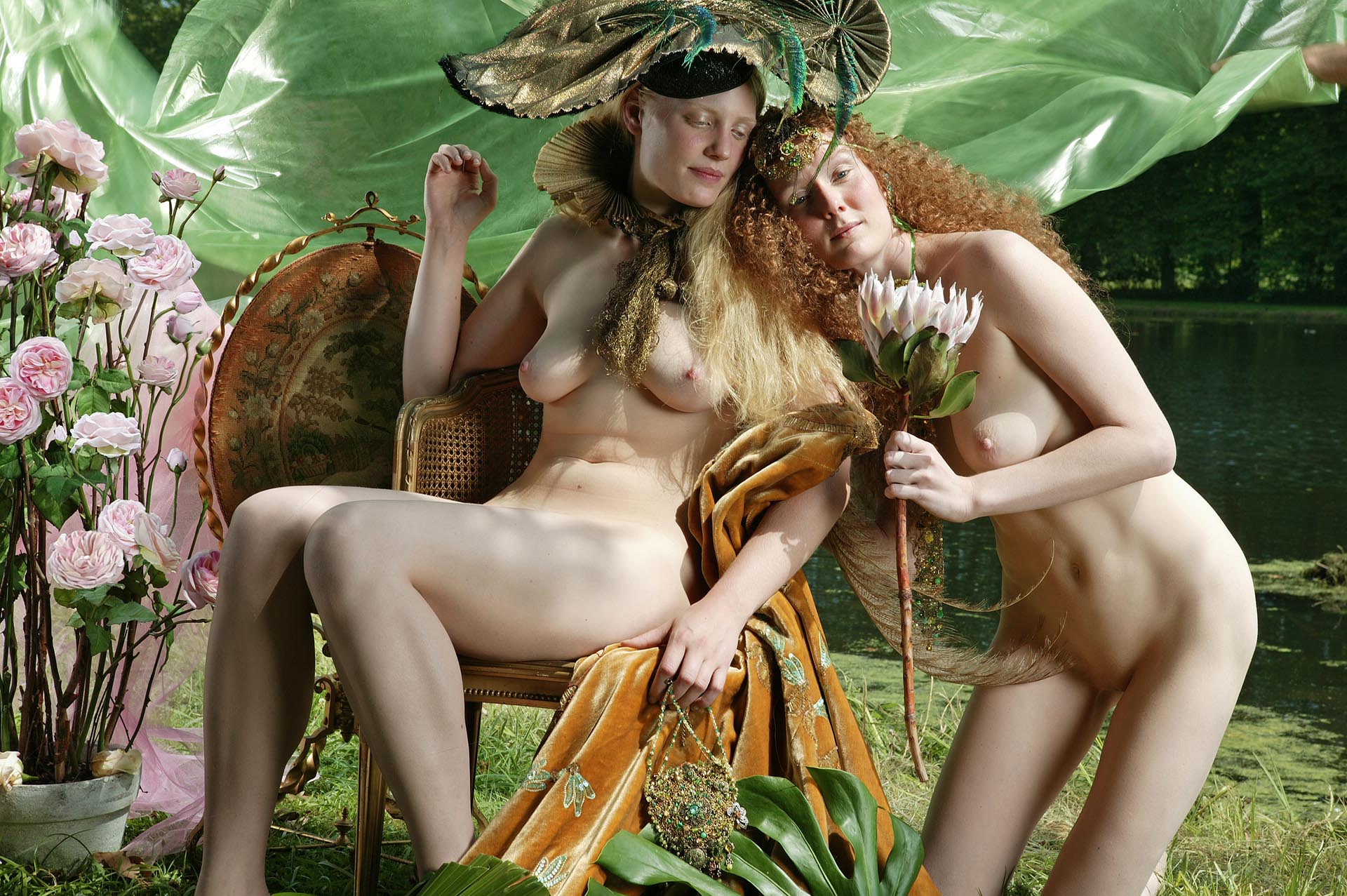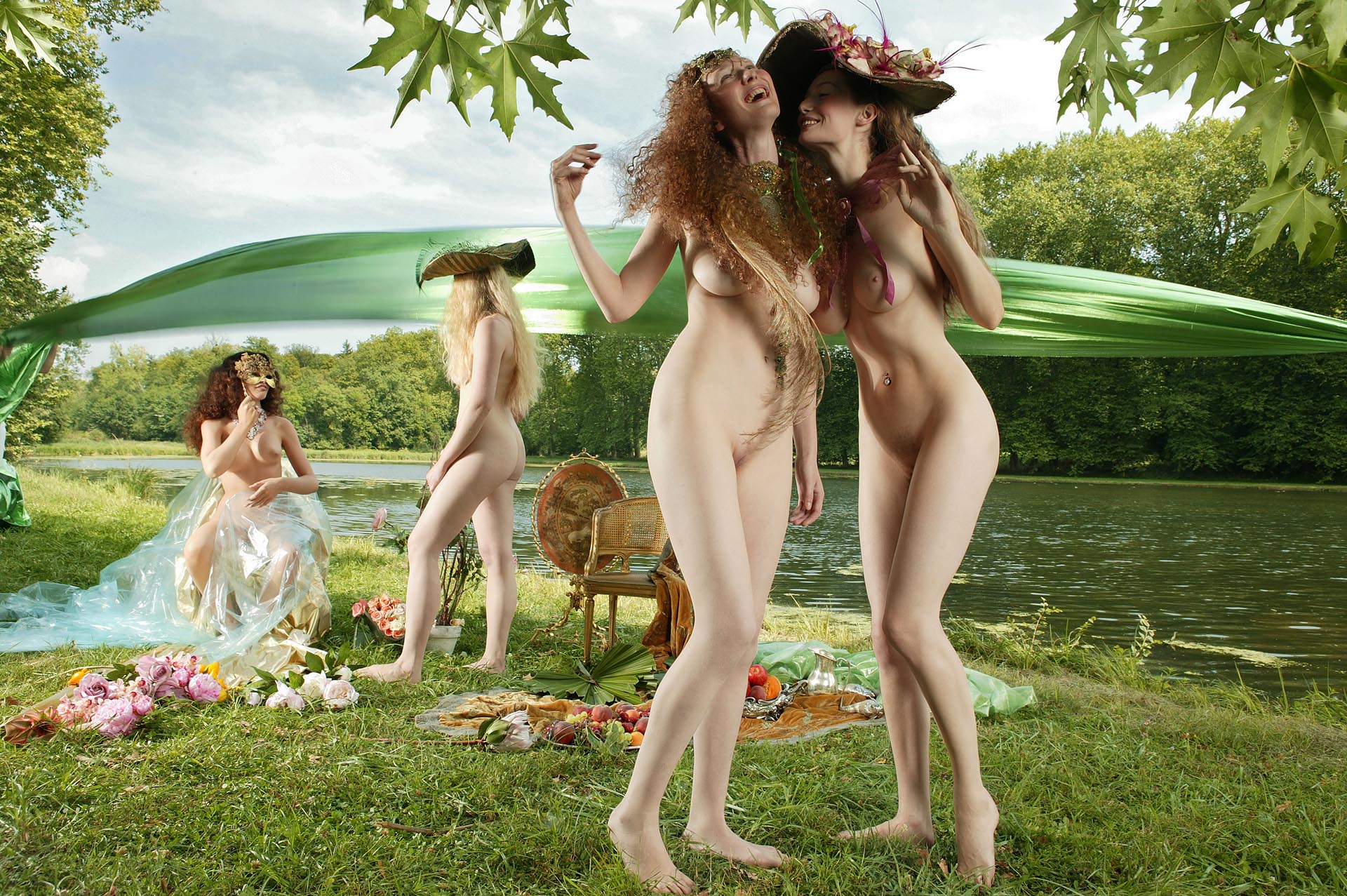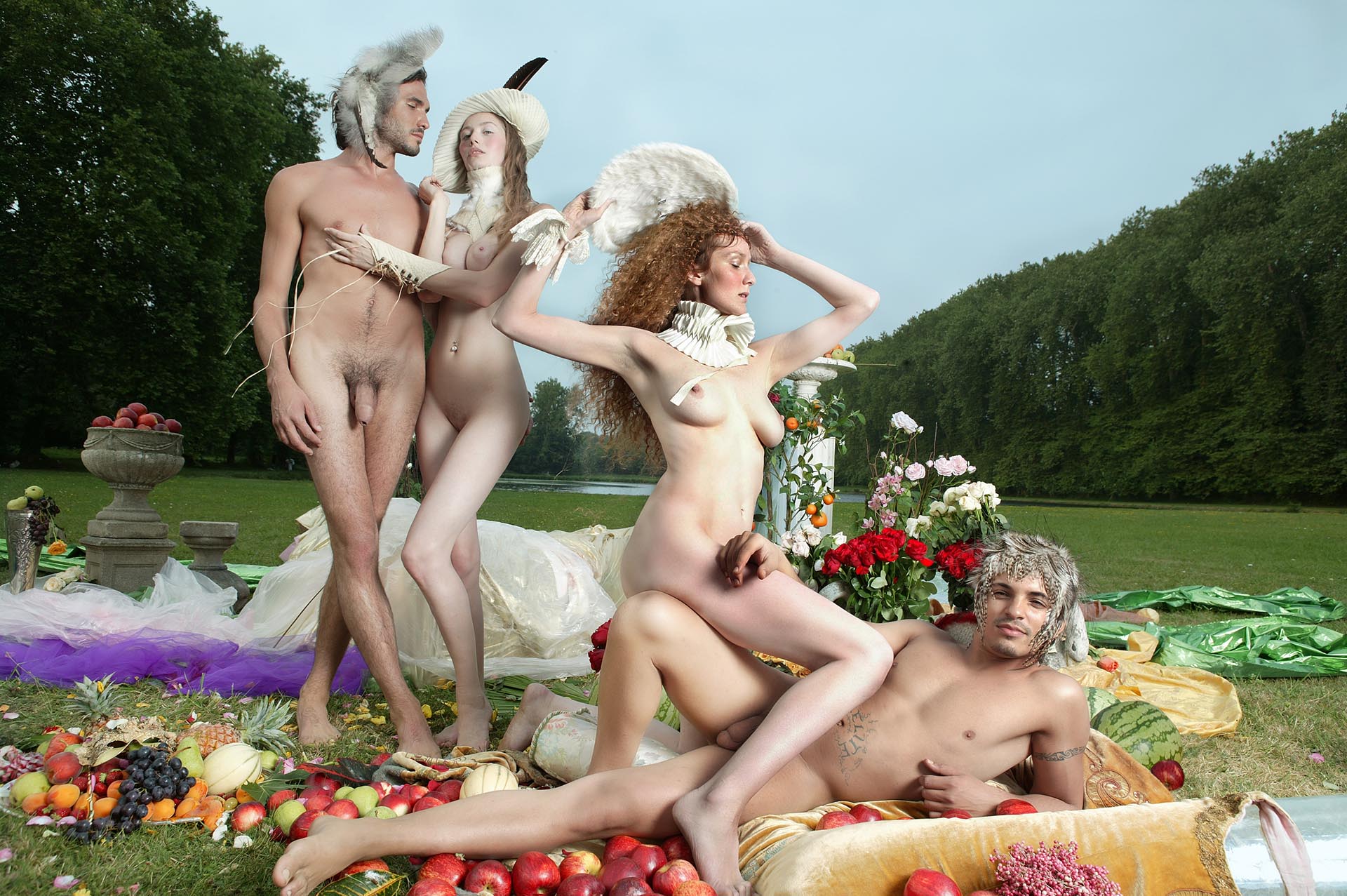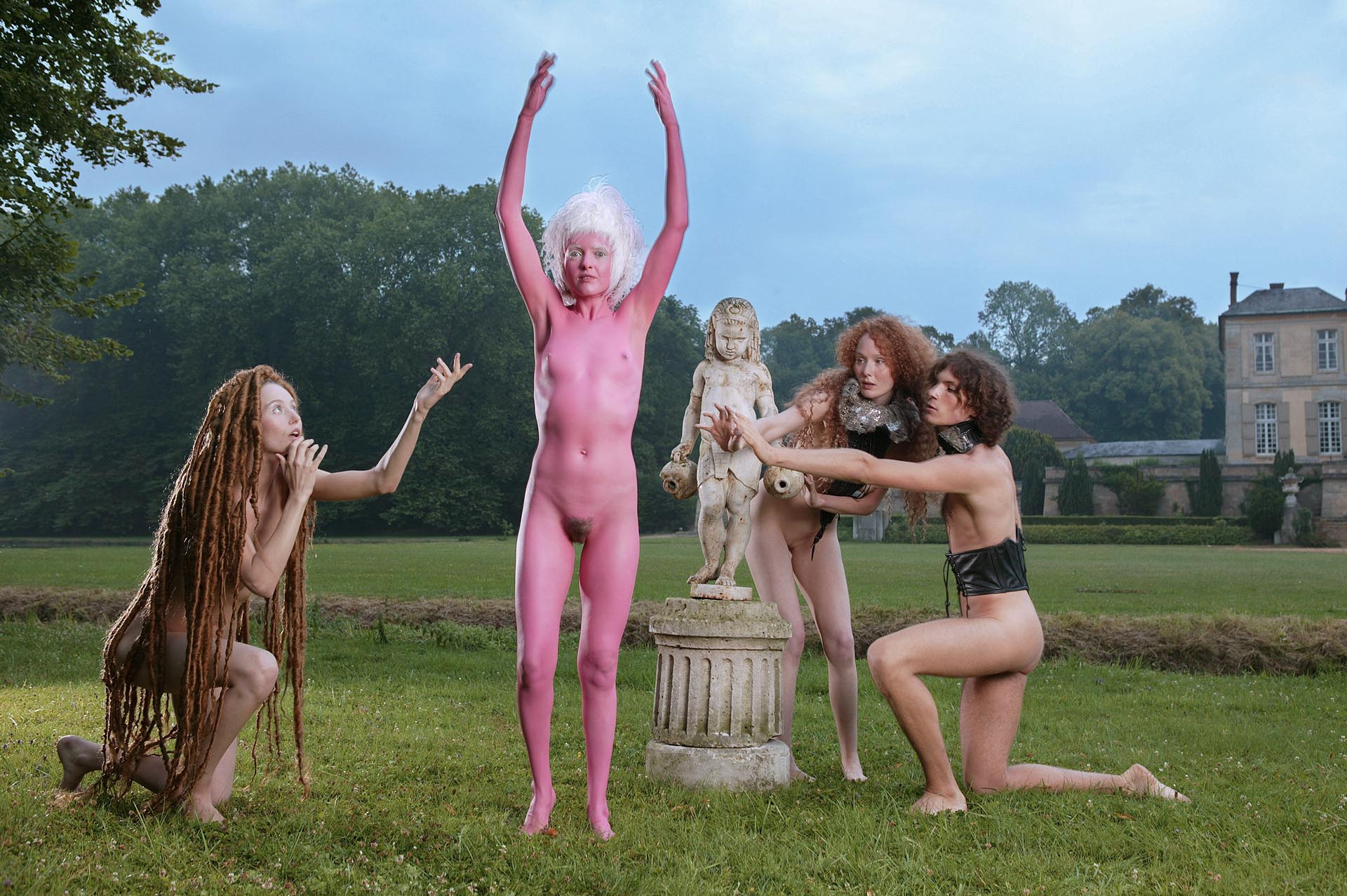Text by Artemis Herber
In Paradisum – Iris Brosch a Mediator between Earth and Heaven
The Garden of Eden expands into vast fields in the communities of artists, writers, thinkers and cultural ac- tivist of diverse background. They share the common grounds of ancient myths, antique and historic sources digging up fallow land for revitalization understanding the contemporary world while gazing back at the past.
With her performances and multimedia shows, internationally acclaimed artist Iris Brosch finds her inspira- tion in classic literature, music, ancient myths and visual arts. Along with their adaptations, she re-appropri- ates In Paradisum as a parcel of Dante’s (1265 – 1321) Devine Comedy.
Within the framework of Tableaux Vivants that is inspired by historic paintings, the viewer is immediately drawn into a riveting narrative or deeply intriguing images, with references to literature, art, and history. Pho- tographer and video artist Iris Brosch weaves her feminist concept into three performance pieces in a com- prehensive context of a trilogy, one being that of In Paradisum.
She suggests playful Renaissance and Baroque attributes by incorporating a broad spectrum of metaphors, symbols, and allegorical figures borrowed from Greek myths and their transformed versions throughout the history of literature and the arts.
In Paradisum Frise 01 - 300x1500cm
The model’s actions and gestures emerge by themselves releasing moments of pure joy. Simultaneously, and frozen in time. Brosch scans and triggers the surface of human bodies while mediating between the artist's mind and hand, her concept and imagery, her virtuosity and physical realization, being on earth while exploring heaven, and metamorphosing Earth into Paradise.
In Paradisum, consisting of 7 chapters, sends a message to overcome fear by pleasure
The setting recalls the Decameron by Boccaccio (1313 - 1375), a collection of novellas that take place in a secluded estate outside Florence, where seven young women and three young men escape the pest (the Plague or the Black Death), which was afflicting the city. During their two-week stay each member was assigned to tell a story in favor of the naturalness of sex by combining and interlacing sexual experiences with nature.
Most striking in Iris Brosch’s body of work is the adaptation of a genre from literature that creates a new situation through a decisive artistic move from the literary novella that is now translated into a visual narrative. A novella's essential feature is based on the distribution of announcement of good, exciting news.
Iris Brosch indeed announces good news! The world is female!
In Paradisum Frise 02 - 300x1500cm
In times of chauvinism, racism that offers vast nesting for sexist violations promoted by prominent and president figures, Brosch suggests in the hindsight of history a utopian idea of a woman's world. Man’s demeanor generates in her novella an intriguing utopia of a past that we have not lived yet.
Sources for her exciting and good news are quotes from ancient times or classic literature that serve as a template conveyed into current gender issues and politically relevant topics. Our disconnection from nature, its endangered and unstable balance provokes flashbacks into paradise, occupied with scenes of innocence, kindness, and care. Heroines, Wonder Women, female shamans and pink fairies emerge from another time and herald the recreation of what makes us human and being fe-(male).
Each of Iris’s images or videos originates with the prefix "fe-". In her performances every participant enters through a transformative gate into the woman's world liberated from oppression and cultural forces crafted by men over centuries.
She weaves a colorful, opulent and masterful tapestry of the woman's body and empowerment. Reminiscent body attributes and decors such as corsets, collars, chokers, wrist bandages and breastplates attest to the web of body control systems, confinement, suppression and body shaping depending on social, religious, or political authorities and conditions.
The novelty - which is actually not so new - is the repeated attempt to liberate the female body and mind. Nakedness contributes to the idea of liberation, freedom and natural self-understanding of our bodies. At the same time, every attribution and decor reminds us of the context and continuity and prolonged identity throughout history.
In Paradisum Frise 03 - 300x1500cm
By discarding prudery, notations of Baroque landscapes and estates from the era of absolutism and landscapes shaped by men, stand in contrast to Iris Brosch’s lush gatherings of playful frivolity, lust, and pleasure. In analogy she places In Paradisum at the French Chateau Villette France, a 40 minutes escape from Paris, also known as The Little Versaille, designed by Francois Mansart (1598-1666). The lush gardens were designed by landscape architect André Le Nôtre, one of Louis XIV’s architects, who designed the palace of Versaille. In Paradisum is situated apart from baroque architecture of power and grandeur. Iris Brosch prefers the outdoors at the edges of cultivated areas of the park towards the rim of river and forest, where nature takes over, while leaving memories of outmoded relics and structures. Still, those attributions confine our cultural heritage and inform our bodies, while at the same time nakedness is revealed indicating how the female body is rendered “hysterical”, an ongoing symptom and tension women still undergo in the 21st Century.
With comparison to "Garden of Earthly Delights" (Hieronymus Bosch, c. 1450 – 1516) Iris Brosch’s splendid sceneries exaggerate into a nearly surreal imagery of timelessness, innocence, sheer joyous excess, suggesting another way of life, free love, and carefree existence overcoming fear by pleasure. Just as Hieronymus Bosch envisioned the modern world before it existed, Iris Brosch looks into the past and magnifies what we have not lived yet.
With delicate body language, opulent staging and sensitive scanning of the female body's surface, Brosch encourages female empowerment and self-acceptance taking nudity as a feminist gesture and calls into attention the need for ending oppression against women. By taking Dante into the 21st century, she reflects on the relevance of love today, reinforcing the autonomy of art by employing transfigurations of the human body, as well as incorporating the concept of the freedom of love as an all-inclusive force in every facet of existence.
